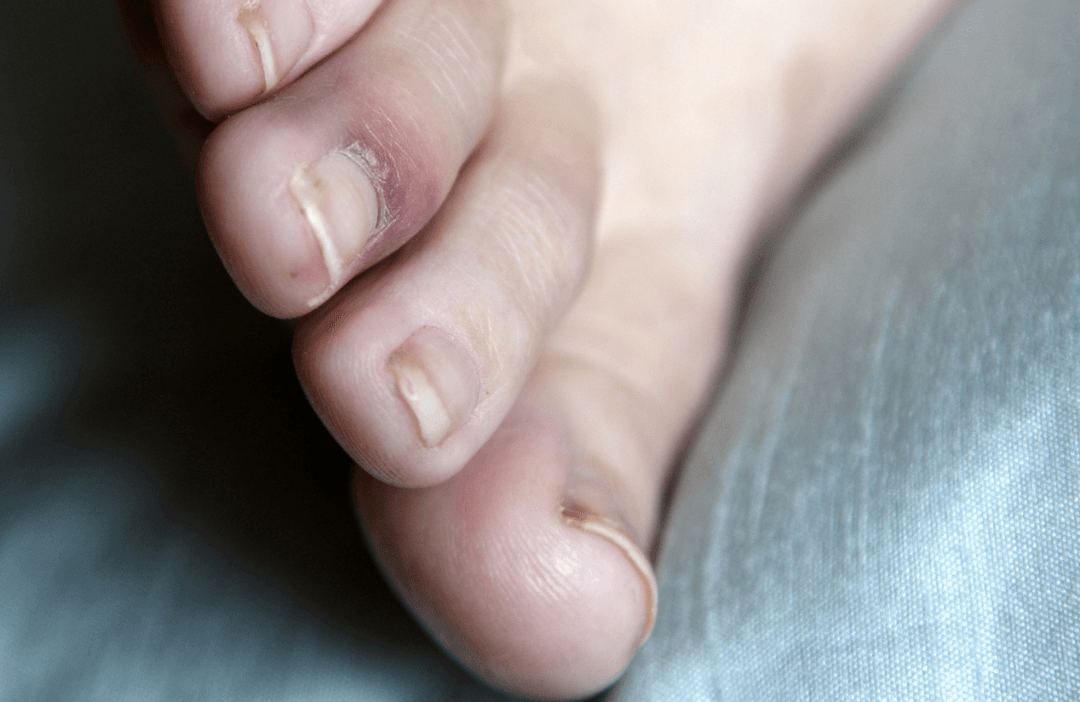Preventing Chilblains
Jan 2022

In comparison with previous winters, this one has seemed quite mild. But all of a sudden, the temperature is starting to drop. During this time whilst many of us are working from home, getting out of the house has never been so important. Moving our bodies, taking in some sunshine (when it's out!), getting some fresh air and just having a change of scene are all valid reasons for downing tools and taking a break from the daily grind. If you're a dog walker in Hackney, no doubt you make use of the Marshes regularly. And if you've got small people to look after, you'll be in the playgrounds often.
Having having cold feet, in particular cold toes however, can really be enough to put you off. We all know how cold toes feel; they can be painful, numb and really sting when you come back in from the cold.
Repeatedly having cold toes can lead to developing chilblains which are sores on the toes and us Podiatrists are seeing a lot of them currently-particularly in children, which is often a complication of a previous covid infection.
Chilblains present as small vascular, bruise-like lesions on the end of toes which can cause your toes to become swollen and infection can be an unwelcome side effect if the skin breaks. Keeping those toes warm whilst you’re out and about is crucial but often easier said than done.
So, I’ve put together a handy guide to how to look after your feet in the cold weather. Remember though, it is important to have an assessment to reach a diagnosis so always see your local podiatrist to have advice tailored specifically for you.
1. Keep your core warm
Toes get cold because the peripheral circulation shuts down to keep your core body temperature consistent. The physical shutting down of circulation is what causes the pain in your toes when they get cold. You can prevent this from happening by keeping your core warm; wear a good padded coat with layers beneath and invest in some thermal leggings to wear beneath your trousers.
2. Warm your shoes up by placing them under a radiator
Making sure your shoes are warm before you put them on can be another way to give your feet some additional warmth. You can also do this with your socks; lay them on your radiator for 5 minutes before wearing them to make your feet toasty warm.
3. Invest in some thermal or wool socks
Thermal socks will trap the heat against your skin to aid keeping you warm. If you can’t get thermal socks, try some wool socks. Make sure they fit well, anything too tight will constrict and squeeze the circulation out of the digits and anything too loose won’t have any benefit (except to maybe cause a blister!).
4. Wear insulating insoles in your shoes
Lambswool insoles are super fluffy and really comfy inside your shoes whereas aluminium insoles are good for reflecting the heat back towards your feet. There’s lots of brands and types out there, try different ones to see which suit your feet best and always make sure there’s enough space to wiggle your toes once you’ve got them in your shoes.
5. Avoid heating your feet up too quickly when you come in from the cold
The temptation when your feet are so cold is to warm them up using a heat source such as a hot water bottle or popping them in front of the radiator or fire. It’s important to allow the tissues to warm up gradually, as forcing them to heat up too quickly can lead to a build up of toxins which causes itching and breakdown of the skin. Let your feet slowly acclimatise to the indoor temperature on their own to avoid any further complications.
If you're struggling with cold feet and circulation problems this winter and you need more advice, why not book a free 15 minute consultation to see how I can help you? Click the book now button to get in touch.
#walking #dogwalking #mentalhealth #moving #exercise #circulation #covidtoes #chilblains #hackney #marshes




